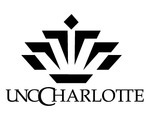The scar-covered back of a slave is a fitting metaphor for the history of slavery in our country. Kwadwo Opoku-Agyemang once said “Slavery is the living wound under the patchwork of scars. A lot of time has passed, yet whole nations cry, sometime softly, sometimes harshly, oftentimes without knowing why.” The physical wounds from the whip have healed, but the living scars that Opoku-Agyemang spoke of are slow to fade away. We must ask the question “How do the emotional scars of a race begin to heal after generations of bondage and being
treated as property?” The answer is seen as generation after generation of African Americans have defied the constraints our nation has placed on them, and risen up to be a stronger, more resilient people.
The issue of slavery and race has been a powder keg that has sparked our country into a civil war, race riots and unadulterated bigotry that has been passed on from generation to generation. It has divided this nation from our ambitious beginnings to present day. The end of slavery was only the beginning of a very long battle for equality for African Americans. Each passing generation has given a foothold to the
next, so that they too can carry on in this fight. Although the physical scars of slavery have begun to fade, African Americans continue to carry the emotional scars of their past in the present-day fight for true equality.
The Project
The concept of this project is to create a sculpture park that not only mourns the
institution of slavery, but celebrates the triumphs and tragedies of a race that yearns for true
equality. The park will also house work by prominent African American artists and sculptors. The park is divided into three abstract Corten steel sculptural walls and a tree lined allée. The
choice of materials of the three walls that enclose the sculpture park (Corten) is used to represent the resolve and determined will of African Americans as they struggled for equality. The allée
encloses the park and creates two separate spaces for additional sculptures and artwork provided by African American artists. Like the rest of the park, the allée consists of Japanese Cherry
trees. These trees tie the Slave Memorial Sculpture Park into the landscape of Washington DC.
The Site
The site that I chose for The Scars of Slavery Memorial Sculpture Park will be located in Washington DC south of the Lincoln Memorial. The Lincoln memorial is an important historic back drop for many Civil rights landmark events. The site has a prominent place on the National
Mall. The Mall is a place of remembrance with several of our national memorials. The Slavery Sculpture Park will add to this beautiful and reverent place where we as a country celebrate our
triumphs and mourn our mistakes.
The Walls
The Corten steel walls are abstract sculpture of African Americans at different moments in time. The walls titles are: The Wall of Scars; Fight for Equality Wall; and Bondage Wall
The Wall of Scars
The Wall of Scars takes its concept from a picture of a slave with several scars on his back. The wall is broken up into 76 separate forms, representing the years that slavery was legal in the United States from the ratification of the Constitution to the passage of the 13th
amendment. Each wall is an abstract sculpture of a human back, branded by the horrors of slavery. The scars are formed by welding beads, crafted with an arc welder, onto the metal wall.
The beads are raised to give the look and texture of a human scar.
The Fight for Equality Wall
The concept of this wall is to show the long fight for equality that has faced generation after generation of African Americans. The wall is broken up into seven parts, each representing
20 years of struggles. Each section is then broken up again into five more pieces to give the wall a human scale. The beginning of the wall starts in a severe bent position which is the pinnacle of slavery. This illustrates the stoop labor slaves were subjected to, as well as the physical, subservient position slaves displayed to their masters. As you move along the wall, each piece gradually straightens out. This symbolizes the strength gained as each generation builds upon the gains of the previous one. Each generation in turn showed more will, determination, and
emotional separation from their masters. As a result, over time, the wall has become straight as the slaves were freed and the battle for equality continues to be fought.
The Bondage Wall
This wall is an abstract form of a man bent over, bound to the land by 16 chains. The chains denote the number of slave states that embraced this horrible tragedy as a way of life. Each of these states aided in the bondage and imprisonment of an entire race.
Conclusion
In conclusion, the focus and intent of the sculpture park is to draw attention to the physical and emotional bondage that slavery brought upon this race and our country. The project strives to display not only the horror of this tragedy, and the scar that it has left upon our country, but also the strength and determination of a race to overcome an entire nations attitude of hatred,
and rise up to become a stronger, more resolute people.



